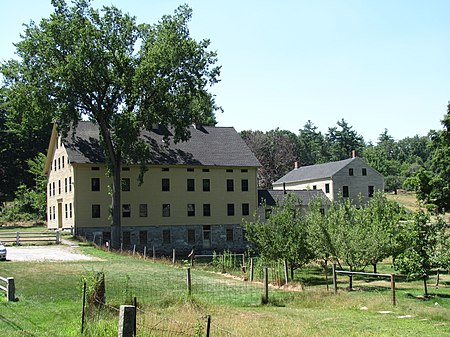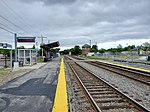Harvard Shaker Village Historic District
Buildings and structures in Harvard, MassachusettsChurches in Worcester County, MassachusettsHistoric districts in Worcester County, MassachusettsHistoric districts on the National Register of Historic Places in MassachusettsNRHP infobox with nocat ... and 3 more
National Register of Historic Places in Worcester County, MassachusettsShaker communities or museumsUse mdy dates from August 2023

Harvard Shaker Village Historic District is a historic former Shaker community located roughly on Shaker Road, South Shaker Road, and Maple Lane in Harvard, Massachusetts. It was the second oldest Shaker settlement in Massachusetts and the third oldest (after New Lebanon (1787) and Hancock, Mass (1790)) in the United States.
Excerpt from the Wikipedia article Harvard Shaker Village Historic District (License: CC BY-SA 3.0, Authors, Images).Harvard Shaker Village Historic District
Shaker Road,
Geographical coordinates (GPS) Address Website Nearby Places Show on map
Geographical coordinates (GPS)
| Latitude | Longitude |
|---|---|
| N 42.5325 ° | E -71.559166666667 ° |
Address
Holy Hill (A7)
Shaker Road
01451
Massachusetts, United States
Open on Google Maps










